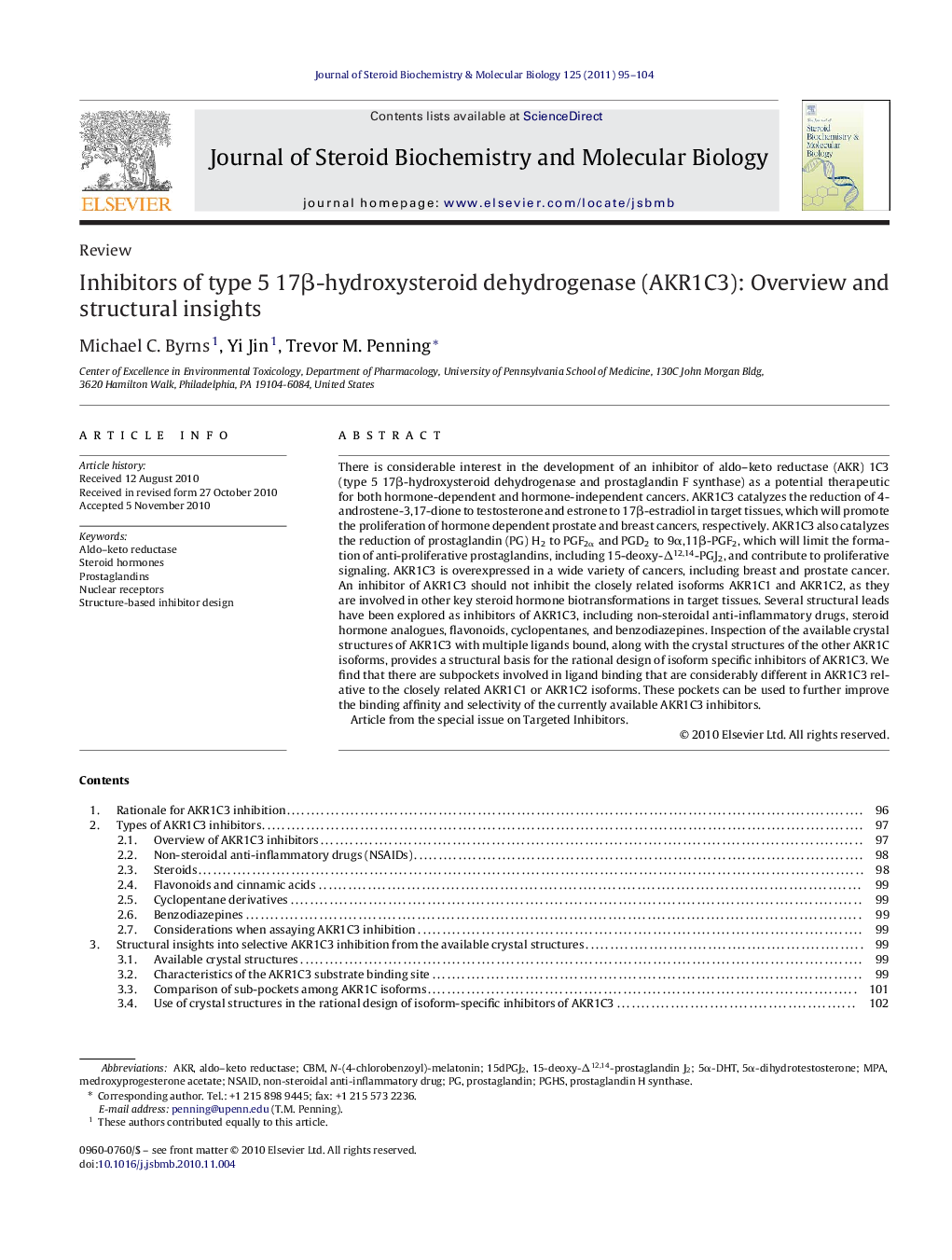| کد مقاله | کد نشریه | سال انتشار | مقاله انگلیسی | نسخه تمام متن |
|---|---|---|---|---|
| 1992057 | 1541034 | 2011 | 10 صفحه PDF | دانلود رایگان |

There is considerable interest in the development of an inhibitor of aldo–keto reductase (AKR) 1C3 (type 5 17β-hydroxysteroid dehydrogenase and prostaglandin F synthase) as a potential therapeutic for both hormone-dependent and hormone-independent cancers. AKR1C3 catalyzes the reduction of 4-androstene-3,17-dione to testosterone and estrone to 17β-estradiol in target tissues, which will promote the proliferation of hormone dependent prostate and breast cancers, respectively. AKR1C3 also catalyzes the reduction of prostaglandin (PG) H2 to PGF2α and PGD2 to 9α,11β-PGF2, which will limit the formation of anti-proliferative prostaglandins, including 15-deoxy-Δ12,14-PGJ2, and contribute to proliferative signaling. AKR1C3 is overexpressed in a wide variety of cancers, including breast and prostate cancer. An inhibitor of AKR1C3 should not inhibit the closely related isoforms AKR1C1 and AKR1C2, as they are involved in other key steroid hormone biotransformations in target tissues. Several structural leads have been explored as inhibitors of AKR1C3, including non-steroidal anti-inflammatory drugs, steroid hormone analogues, flavonoids, cyclopentanes, and benzodiazepines. Inspection of the available crystal structures of AKR1C3 with multiple ligands bound, along with the crystal structures of the other AKR1C isoforms, provides a structural basis for the rational design of isoform specific inhibitors of AKR1C3. We find that there are subpockets involved in ligand binding that are considerably different in AKR1C3 relative to the closely related AKR1C1 or AKR1C2 isoforms. These pockets can be used to further improve the binding affinity and selectivity of the currently available AKR1C3 inhibitors.Article from the special issue on Targeted Inhibitors.
Research highlights
► AKR1C3 produces steroids and prostaglandins for receptor mediated growth.
► AKR1C3 inhibition is desirable for hormone dependent and independent cancers.
► NSAIDs, steroids, flavonoids, cyclopentanes, and benzodiazepines inhibit AKR1C3.
► Crystal structures identify subpockets for rational design of AKR1C3 inhibitors.
► Differences in AKR1C subpockets can be exploited for selective inhibition.
Journal: The Journal of Steroid Biochemistry and Molecular Biology - Volume 125, Issues 1–2, May 2011, Pages 95–104